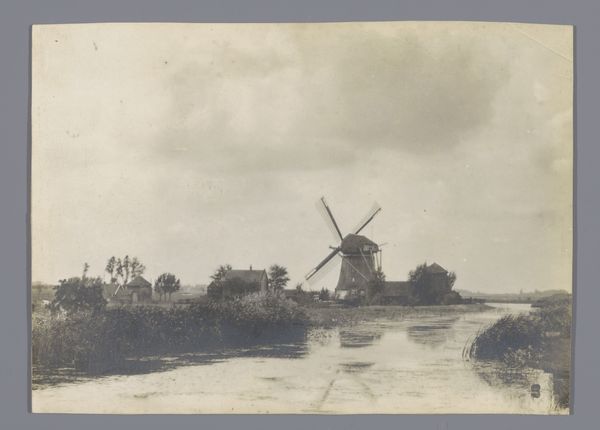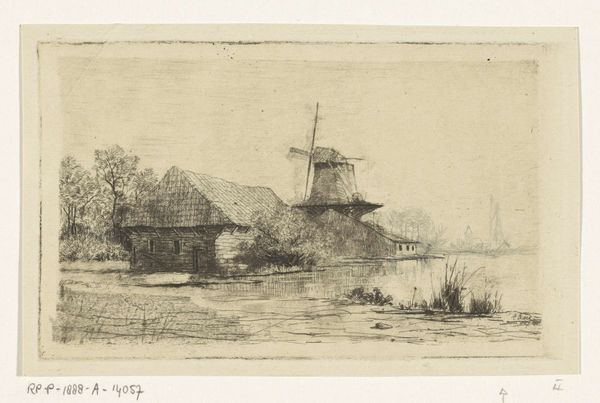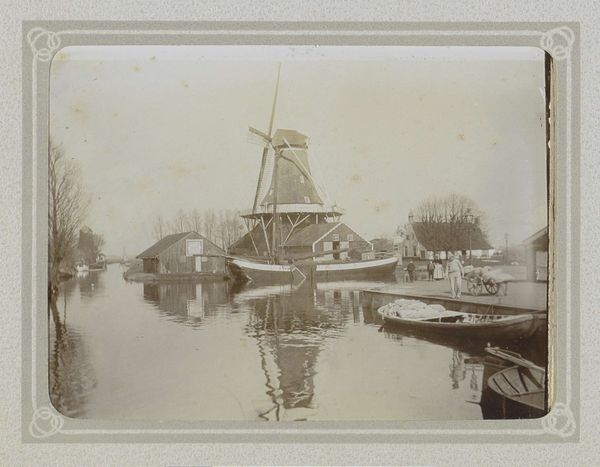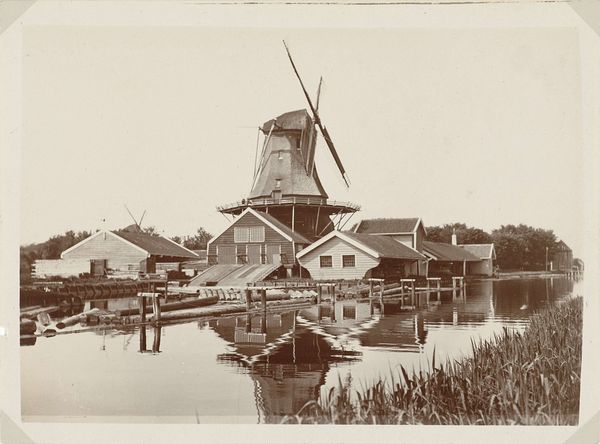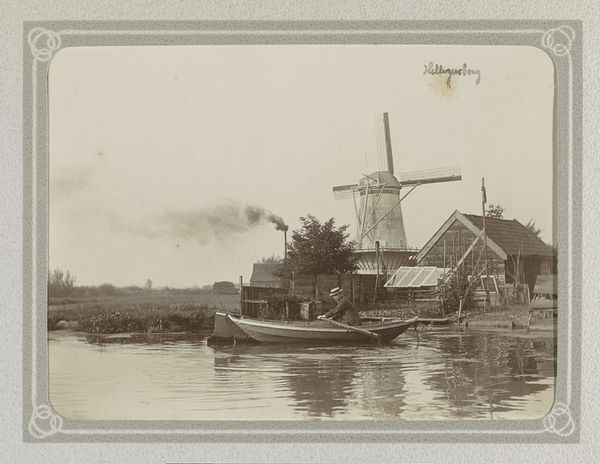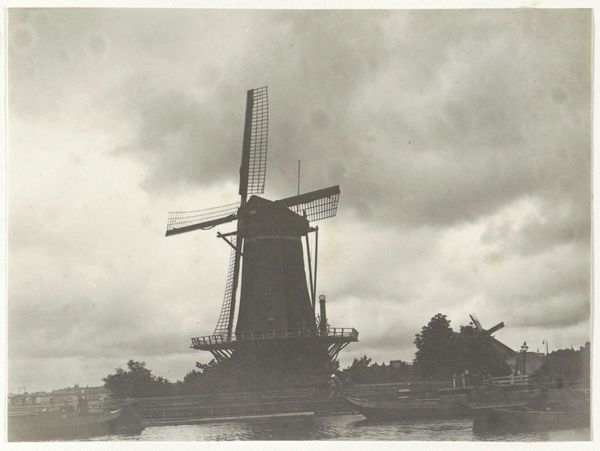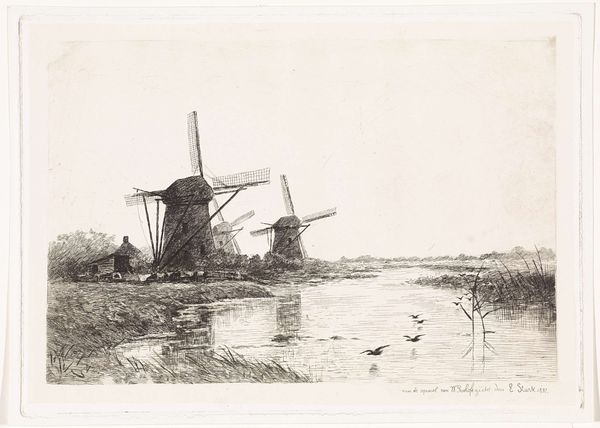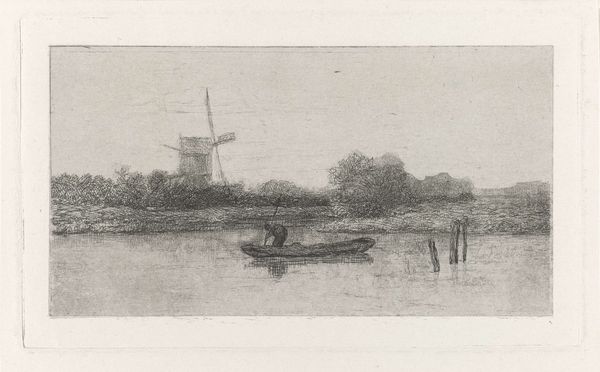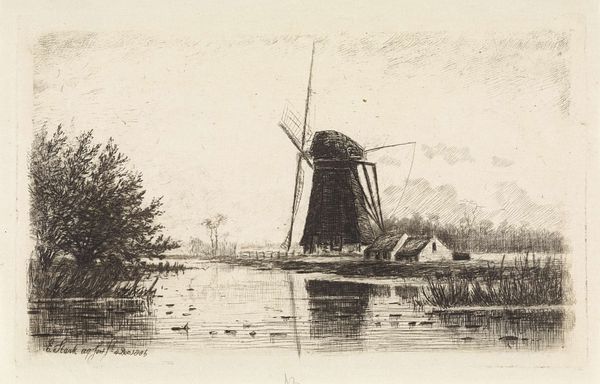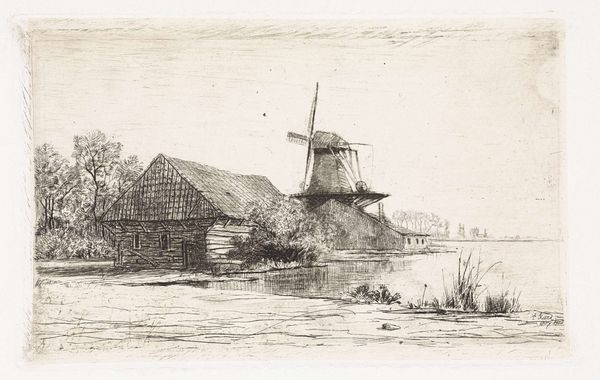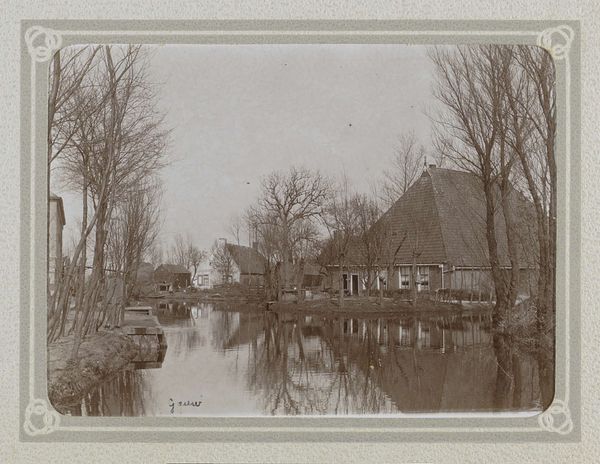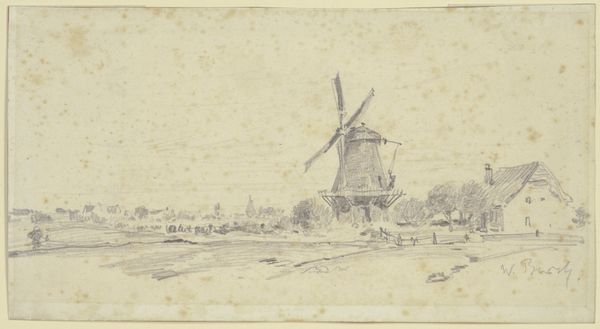
Dimensions: height 146 mm, width 250 mm
Copyright: Rijks Museum: Open Domain
Editor: Here we have "Rivierlandschap met molen", or "Riverside Landscape with a Mill," an etching from the 1890s by Elias Stark, held at the Rijksmuseum. It's so delicate, almost like a memory. What strikes you most about it? Curator: What resonates is how Stark situates the industrial form of the windmill within a seemingly idyllic landscape. But is it truly idyllic? Consider the socio-economic context: the late 19th century witnessed massive industrial shifts, often at the expense of rural communities and traditions. Does the windmill, in its imposing presence, symbolize progress or the encroachment of industrialization on nature and traditional ways of life? What's your read? Editor: I hadn't thought of it that way. I saw the windmill as picturesque, almost comforting. But your point about industrial encroachment makes me reconsider the image's politics. Curator: Exactly. And think about the composition. The reflective water, the small figure—are they reclaiming the space or just visitors? Is there a tension between human presence and the dominance of both nature and the structure. Consider Stark's personal life and choices. How might his identity shape his engagement with the narrative of modernization and its impact on the Dutch landscape? Editor: It feels like I'm looking at the artwork with completely new eyes now! It's not just a pretty picture; it's a commentary. Curator: Precisely! Art doesn't exist in a vacuum. It’s a mirror reflecting the complex realities of its time, inviting us to critically engage with those realities. This etching then isn’t just about the visual appeal but a prompt for conversation. Editor: That's powerful. I appreciate you guiding me to see the layers of meaning within this seemingly simple landscape.
Comments
No comments
Be the first to comment and join the conversation on the ultimate creative platform.

